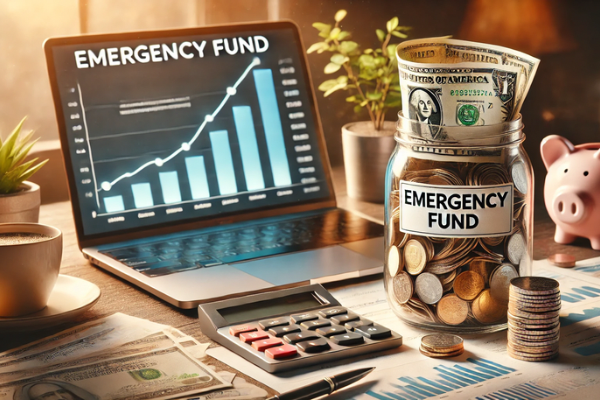In the unpredictable world we live in, financial stability can quickly be shaken by unexpected events—job loss, medical emergencies, urgent car repairs, or sudden home expenses. While it’s impossible to predict when these situations will arise, one powerful tool can make all the difference in weathering the storm: an emergency fund.
What Is an Emergency Fund?
An emergency fund is a separate pool of money set aside specifically to cover unforeseen expenses. Unlike savings for vacations or new gadgets, this fund serves as a financial safety net for life’s surprises. Ideally, it should be easily accessible—kept in a high-yield savings account or a basic checking account that allows immediate withdrawal without penalties.
Why an Emergency Fund Is Essential
Many people underestimate the importance of an emergency fund until they face a crisis. Here are some critical reasons why having one is not just smart, but necessary:
1. Protects You from Debt
Without a dedicated emergency reserve, people often turn to credit cards or personal loans to manage urgent expenses. This leads to high-interest debt that can spiral out of control. An emergency fund gives you a buffer, allowing you to pay cash for unexpected costs without adding to your liabilities.
2. Reduces Financial Stress
Knowing that you have funds available for emergencies brings peace of mind. Financial stress can impact your health, your work performance, and your relationships. Having a cushion gives you confidence that you can handle life’s curveballs.
3. Maintains Lifestyle Stability
An emergency fund can help you maintain your lifestyle during financial disruptions. If you lose your job, for example, you won’t have to immediately downsize your life or make desperate decisions. You’ll have time to plan your next steps carefully and thoughtfully.
4. Offers Job Flexibility
With savings in place, you won’t feel trapped in a toxic job or bad work situation. You can take the time to find a better opportunity without the pressure of immediate income. In essence, an emergency fund buys you freedom and options.
How Much Should You Save?
There’s no one-size-fits-all number, but a good rule of thumb is to save three to six months’ worth of living expenses. This includes rent or mortgage, utilities, groceries, transportation, insurance, and any minimum debt payments.
If your job is unstable or you have dependents, consider saving toward the higher end of that range—or even more. On the other hand, if you have multiple income streams or minimal expenses, three months may be sufficient.
Steps to Build Your Emergency Fund
Creating an emergency fund doesn’t happen overnight. It’s a gradual process that requires planning and discipline. Here are some steps to help you get started:
1. Set a Realistic Goal
Start by calculating your essential monthly expenses. Multiply that by the number of months you want your fund to cover. Don’t be discouraged by the total—breaking it into smaller goals makes it more manageable.
2. Open a Separate Account
Keep your emergency fund separate from your everyday checking account. This prevents accidental spending and makes it easier to track progress. A high-yield savings account is a popular choice because it earns interest while remaining accessible.
3. Automate Your Savings
Automating your contributions ensures consistency. Set up a recurring transfer from your main account to your emergency fund, even if it’s just a small amount each week. Over time, those small contributions will grow significantly.
4. Use Windfalls Wisely
Tax refunds, bonuses, or monetary gifts can accelerate your progress. Consider allocating a portion—or all—of these windfalls to your emergency fund to give it a healthy boost.
5. Cut Unnecessary Expenses
Review your monthly spending and identify areas where you can save. Cancel unused subscriptions, cook more at home, or find cost-effective entertainment. Redirect those savings into your emergency fund.
When to Use Your Emergency Fund
Your emergency fund should only be used for true emergencies—situations that are unexpected, urgent, and necessary. These might include:
- Medical emergencies or unplanned procedures
- Unexpected car or home repairs
- Sudden job loss or reduced income
- Emergency travel due to family crises
It should not be used for planned expenses, vacations, or discretionary purchases. Clear boundaries will help ensure that the fund is available when you need it most.
Replenishing Your Fund
After using your emergency fund, make it a priority to replenish it as soon as possible. Resume your regular contributions and treat rebuilding it with the same urgency as paying a bill. A depleted fund is still better than none at all—but refilling it ensures continued protection.
The Long-Term Impact
Over time, your emergency fund will become a cornerstone of your financial strategy. It helps you stay on track with long-term goals, such as investing, buying a home, or saving for retirement. When emergencies don’t derail your financial plan, you’re free to focus on building wealth rather than cleaning up crises.
Final Thoughts: A Simple Step with Big Rewards
Building an emergency fund may not seem exciting, but it’s one of the smartest and most empowering steps you can take for your financial well-being. It brings security, flexibility, and resilience into your life. Whether you’re just starting your financial journey or looking to strengthen your foundation, don’t underestimate the power of having cash set aside for the unexpected. Your future self will thank you.
